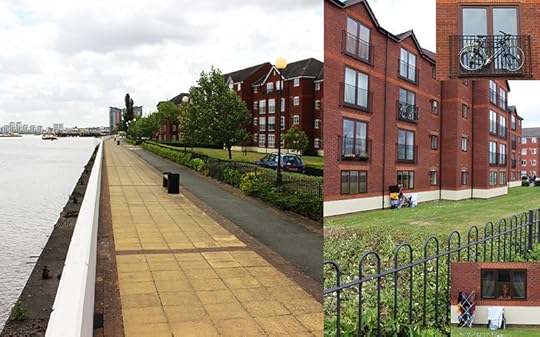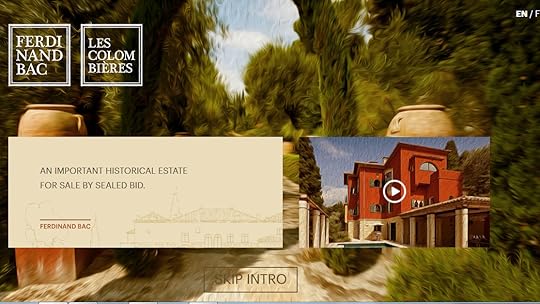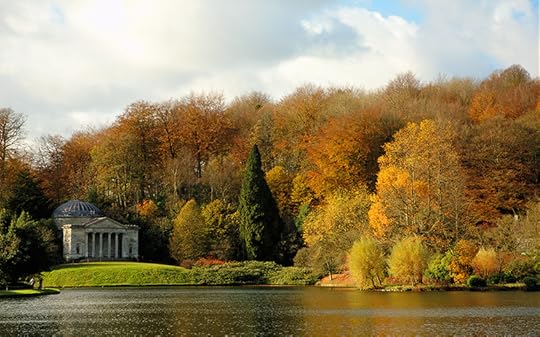Tom Turner's Blog, page 12
November 29, 2013
London cycling die-in protest outside TfL offices on 29th November 2013
I have been hoping for a protest like this for years and was delighted to be there. Here is my next suggestion: Transport for London TfL should set a target for the percentage of journeys to be made by cycling and then (1) raise the percentage of the transport spent on cycling to that level eg 30% (2) ensure that the same percentage of TfL staff commute to the TfL office by bike.
Here is an excellent BBC news report on the demo in which Donnachadh McCarthy an organiser of the Stop Killing Cyclists Campaign, calls for 10% of the TfL budget to go on cycling (compared to 35% in Holland) and makes the excellent point that the Board of TfL is ‘big businessmen’ – with no representatives of pedestrians or cyclists. I see this as a key point. It is likely that TfL staff often cycle to work and support cycling. This is less likely to be the case for big businessmen.
Boris: please remember that you are the only politician I have voted for who has ever been elected: now is the time to come good: organise a London Cycling Summit and cram the board of TfL with die-hard cyclists. Please re-read the history of Lloyd George’s victory over the House of Lords. He asked “Should 500 men, ordinary men, chosen accidentally from among the unemployed, override the judgement – the deliberate judgement – of millions of people who are engaged in the industry which makes the wealth of the country?” The 1911 Parliament Act was passed only when King George V said he was willing to pack the House of Lords with Liberal peers to ensure the vote would swing their way. Bring on the cyclists.
The November 2013 event could be a great precursor for a full-scale event in The Mall in 2014, remembering Martin Luther King and the March on Washington of August 28, 1963. The 2014 event should be on the same weekend as another London cycling event eg the Prudential Ride on Sunday 10 August 2014. It is part of the Mayor of London’s annual festival of cycling.
November 28, 2013
Free copy of Tom turner’s book: British gardens: history, philosophy and design (Routledge 2013)
I like the Goodreads website, though I am a little sorry that Amazon (which I also like) has bought it. If you register an interest in my book on British garden history between 29th November and 14th January they will put your name on a list from which they will choose the recepient of a free copy. Good luck!
.goodreadsGiveawayWidget { color: #555; font-family: georgia, serif; font-weight: normal; text-align: left; font-size: 14px;
font-style: normal; background: white; }
.goodreadsGiveawayWidget img { padding: 0 !important; margin: 0 !important; }
.goodreadsGiveawayWidget a { padding: 0 !important; margin: 0; color: #660; text-decoration: none; }
.goodreadsGiveawayWidget a:visted { color: #660; text-decoration: none; }
.goodreadsGiveawayWidget a:hover { color: #660; text-decoration: underline !important; }
.goodreadsGiveawayWidget p { margin: 0 0 .5em !important; padding: 0; }
.goodreadsGiveawayWidgetEnterLink { display: block; width: 150px; margin: 10px auto 0 !important; padding: 0px 5px !important;
text-align: center; line-height: 1.8em; color: #222; font-size: 14px; font-weight: bold;
border: 1px solid #6A6454; border-radius: 5px; font-family:arial,verdana,helvetica,sans-serif;
background-image:url(https://www.goodreads.com/images/layo... background-repeat: repeat-x; background-color:#BBB596;
outline: 0; white-space: nowrap;
}
.goodreadsGiveawayWidgetEnterLink:hover { background-image:url(https://www.goodreads.com/images/layo...
color: black; text-decoration: none; cursor: pointer;
}
Goodreads Book Giveaway

British Gardens
by Tom Turner
Giveaway ends January 14, 2014.
See the giveaway details
at Goodreads.
I have also started Goodreads Groups in which to discuss books on Garden design history and Landscape architecture and planning – with the aims of encouraging the preparation of good reading lists and of stimulating discussion about books.
An opportunity to see, and buy, Les Colombieres garden by Ferdinand Bac
Ferdinand Bac (1859-1952) was a nephew of Napoleon, a cartoonist, a writer, a garden designer and an important influence on the great Luis Barragan. Les Colombieres, Bac’s villa in Menton, is up for sale by sealed bid and, if you are lucky enough to own a few oil wells and copper mines, may be a snip. For a video of the house and garden see http://www.les-colombieres.com/. It was made between 1918 and 1927, as the Art Deco movement was evolving into high modernism,
November 26, 2013
Kongjian Yu – landscape architecture as an art of survival
I have praised Kongjian Yu’s work before and much enjoyed his lecture to the HGSD (above). I particularly like his advice to ‘make friends with the flood’ and to design for the ‘integration of contemporary art and ecology’. But I am having doubts about my call for him to be appointed Chief Technical Officer to the The Ministry of Housing and Urban-Rural Development 住房和城乡建设部. For sure, he would be very good at the job – but the landscape architecture profession has greater need of him.
It is bad mannered of me to criticise Kongjian after he quotes me in his lecture, but there are two historical points I would like to correct. First, the history of landscape architecture in east and west can be traced back for thousands of years – though its name is but 185 years old. Second, the planning of western gardens and parks ‘for ornament’ dates from c1700 and is now in decline. Older parks and gardens were always planted for food.
So here is an invitation: next time Kongjian Yu is in London I would be delighted to show him round my local park and the new building for the University of Greenwich Department of Landscape Architecture. Greenwich Park was designed in 1660 primarily for food production – and it still produces a large quantity of food, much of which is collected by ethnic Chinese. So it is very appropriate that the roof of the new school has the production of food as one of its main design aims: it will be used for research into the use of living roofs for food production and other sustainable purposes.
November 24, 2013
Lord Norman Foster’s Thames-side Boom Boxes
We are pleased to publish the hitherto-unseen concept which so evidently inspired Lord Norman Foster’s pair of Thames Boomboxes. As previously agreed, Lord Norman does ‘an awfully good box‘. His heart is in the right place: he speaks with enthusiasm about urban design and works with good landscape architects. The problem, I fear, is that his head is in the wrong place. He sees buildings as objects, not as the creators of space. His own office (the left-hand building, above) is a fine box. But, like a hifi box or another consumer product, it could fit equally well in any context. There is nothing-London and nothing-Thames about it or the curvy adjoining residential boombox – except of course for its wannabe name: The Albion. The above photograph was taken on a warm day in late summer. Re-visited last week a howling gale was being funneled through the arch under the Albion. The ambient temperature was 11C and, with wind-chill, felt like -1C. So, while perfectly able to admire Foster and Partners architecture, I condemn this example of the firm’s the landscape architecture and urban design. The half-doughnut building faces due north, so that its wings keep out all sunlight except for mid-day in mid-summer. This is not my idea of good conditions for enjoying a good outdoor life beside a great river.
November 15, 2013
Useful info for the mayor and leader of Royal Greenwich Borough Council

Stupid landscape architecture and mediocre architecture in Woolwich, London
Dear Councillor Angela Cornforth and Councillor Chris Roberts
Respectfully, I draw the following points to your attention:
You were elected to represent the people of Greenwich
The people you represent do not want to pay for mowing useless grass
. They prefer gardens.
The people you represent wash their clothes. After that, they want to dry them – but not in a communal space (inset photo, bottom right)
The people you represent ride bicycles. They and do not want them to be stolen and they do not want to hang them from the Juliet balconies you have allowed to be built (inset photo, top right).
Your council’s riverside path is 36 feet wide (=10,973m). It has hardly any users. This is a waste of land. The heavily used riverside footpath in Maritime Greenwich is called the Five Foot Path and is 5′ = 1.524m wide.
The buildings your council allowed to be built c1995 look like relics of the 1930s with double glazing. I believe Councillor Roberts was in charge of Planning at that time. Past errors should be rectified
Your council still employs a lot of town planners. They have powers which could be used to secure good urban and landscape design. Since they continue to permit unustainably bad urban landscape design, you should sack them.
The reason your Council should have landscape architects on its staff is not to do design work. It is to ensure that planning applications have appropriate landscape conditions attached to them – so that public goods can be secured through the planning process. The town planners who do this work at present do not have the necessary skills in design, construction, planting or the social use of small outdoor space in urban areas. Think about it: if either of you has a heart attack, do you want a gynecologist to look after you? If your car needs to be repaired, would you take it to a vet? If your house has subsidence, would you cal for a decorator? I guess not, so why not employ landscape architects for landscape architectural work?
Yours truly
Tom
November 13, 2013
Garden history on Goodreads
November 1, 2013
Stourhead Landscape Garden in autumn with Radio 4, Eddie Mair and Alan Power
Stourhead is more than a tree garden: it is an important work of art
Listening to Eddie Mair on Radio 4 I often think ‘Eddie is Britain’s Best Broadcaster, ever’. He towers above the entire Dimbleby family as the Shard towers over London. Well, for several years Eddie has been chatting with one of Britain’s nicest gardeners: Alan Power looks after Stourhead. Eddie went to Stourhead Garden today and spent two and a half hours walking round with Alan. It was a vintage disappointment. Alan mentioned several times that Stourhead is a work of art and that it has many temples. Eddie missed the point and was interested only in the trees and the autumnality – so we kept coming back to Tulip Trees and Maples. It was like walking round St Paul’s Cathedral and talking about the materials and the paint colours – interesting enough for specialists, but not the main point for a high profile discussion. Reyner Banham observed that ‘The purely visual aesthetic of Stourhead, free of sentimentality and allusion, is what puts it in the class of European masterpieces… in a manner that escaped Capability Brown for most of his life’. I do not know why Banham thought Stourhead ‘free of sentimentality and allusion’ but he is surely right about it being a masterpiece and a work of art – and there are only a handful of gardens in this category. Don’t get the wrong idea: I am very interested in why, for example, TS Eliot wrote ‘Let us go then, you and I’ instead of ‘Let us go then, you and me’ but if I were going to present Eliot to a mass audience on Radio 4 then I would not take this as the most important point about either him or J Alfred Prufrock.Let’s hope Eddie Mair returns to Stourhead with a determination to understand its importance as a work of art.
October 22, 2013
London Sightseeing – a cruise on a River Thames Boat
How do Londoners and tourists regard the river Thames? This video was taken on a London City Cruise and you can hear the waterman’s commentary. I guess he loves the river but, like Joseph Conrad, sees it as being as much a place of darkness as a place of light – while also being a river of greatness, cruelty and folly, a place where kings are cruel and greedy, where most architects are fools and where the people remain cheerful, cynical and long-suffering. My view is that the river and its banks need enlightened planners, brilliant architects and imaginative landscape architects. That, and some money, could put London high in lists of the world’s top waterfront cities. The Mayor of London and the Greater London Authority (GLA) put their weight behind the 2012 Olympic Bid. They should now accept the challenge of getting near the top of these lists:
Great Waterfronts of the World
17 International Cities With Wonderful Waterfronts
World’s Top Waterfront Cities
Top 10 waterfront cities in the world
I do not know whether Joseph Conrad belonged to The Company of Watermen and Lightermen but he had many years experience as a seaman on the high seas, on the River Thames and in the West India Docks. I’m sure he would like to have London on these lists. He loved London, loved the Thames and lived in Tachbrook St, London SW1V 2NG.
October 19, 2013
The skyline, architecture and landscape of the River Thames in Central London
I see the Banks of the Thames as a place where, during the twentieth century, unimaginative planning and selfishly mediocre architecture often conspired to produce designs better suited to a rundown provincial town than to the heart of a great city. Skylines, landscape and architecture should be considered together, looking to the past and looking to the future. ‘Protecting’ views is important but insufficient. Proposals for ‘high buildings’ ‘tall buildings’ and ‘towers’ should be viewed in context, never in isolation. Studies of their visual and environmental impact require scenic quality assessments, a policy context and full testing on a digital model of the city. As the below quotations reveal, London’s river is both a Place of Darkness and a Place of Light.
William Blake, in 1794, found ‘in every face I meet / Marks of weakness, marks of woe’ where ‘the Thames does flow’.
William Wordsworth, 8 years later found the Thames a river of beauty and romance. He declared that ‘Earth has not anything to show more fair’ (1802).
Joseph Conrad, in 1899, knew the Thames as a place of history, romance, toil, darkness and light. He saw London as ‘the biggest, and the greatest, town on earth’, a place which had known ‘the dreams of men, the seed of commonwealths, the germs of empires’ and was yet ‘one of the dark places of the earth.’
Since 1945 property developers have seen the Thames as a place to make a quick buck
Since 2000, some wealthy immigrants have viewed riverside apartments as great places to launder the ill-gotten gains of financial scams and miscellaneous corruption.
Recent blog posts about London’s River Thames skyline landscape
The 122 Leadenhall Cheesegrater and protecting London’s skyline landscape view of St Paul’s Cathedral from Fleet Street
The Shard architecture and skyline landscape symbolic reviews
Sunlight, tall buildings and the City of London’s new urban landscape architecture
The visual impact of Renzo Piano’s Shard on the landscape and skyline of the River Thames
London’s skyline: landscape and high buildings policy – and my apology for postmodern urban design
London Sightseeing – a cruise on a River Thames boat
See also: Rem Koolhaas on London’s skyline. Koolhaas remarks that ‘London has always changed dramatically and it’s still is not a very dramatic city. So it can go on. I think that in London whatever you do you do not disturb an earlier coherence. You do not disturb an earlier utopia like in Paris. It can stand a lot of development without suffering’. I read this comment as a polite way of saying that most of London’s riverside is pretty dull, as the above video shows, it has its moments – but not enough of them.







